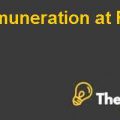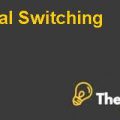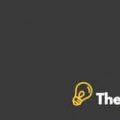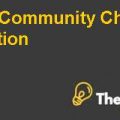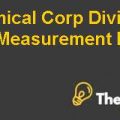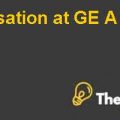Volkswagen Group Case Solution
Introduction
Volkswagen is a German based automotive corporation, a multinational company with headquarters in Wolfs burg the fifth largest city of Lower Saxony in Germany.
Volkswagen is ranked as seventh world largest company by fortune 500 of 2016. Volkswagen specializes in design, manufacture and distribution of passenger and commercial vehicle, engine, motorcycle and turbo machinery. Volkswagen had surpassed Toyota as well through the sales of 10.3 million in 2016. (Due to unavailability of the industry average. This company also compared for measuring performance)
Volkswagen AG was founded in 1937 to manufacture cars initially known as Beetle and afterwards 1965 it started growth through the strategy of acquisition. The group’s further strengths include in particular its unique brand portfolio, its steadily growing presence in all the main world markets, holding names of Bentley, Audi, Skoda, Bugatti, Porsche, SEAT, Lamborghini and Volkswagen marques. It holds motorcycles division under Ducati brand and another commercial vehicle under marques Scania, Van and Volkswagen operate in 153 countries of the world as commercial vehicle. The Volkswagen Group is well positioned to deal with the mixed developments in automotive markets around the world. The group’s brands will further optimize their vehicle and drive train portfolio in 2017 to concentrate on the most attractive and fastest-growing market segments.
Volkswagen owns two categories in shares market i.e. ordinary shares, and preference shares and its shares are primarily traded in Frankfurt Stock Exchange while listed and traded on other domestic and worldwide stock exchange as well. The presentation currency in financials is Euro due to German origin of the company. Although dealing and having significant stake all around the world Volkswagen group faces currency risk which is reduced through natural hedging comprising currency forward, currency options and cross-currency swapping likewise interest rate risk is also hedged through interest rate swaps, cross currency swap and other interest rate contracts that management feel appropriate.
Volkswagen had suffered a crisis in 2015 which also covers effect on its financial stability due to the scandal of emission. Volkswagen had put a software named Defeat Device that makes a vehicle appear more environmentally friendly. This issue was tracked and raised by Environmental Protection Agency claiming on half of a million cars. The concern of emission hit Volkswagen shares and product market as well. Consequently,Volkswagen has also recognised expense amount above approximately sixteen billion for diesel issue in 2015 and faced additional costs above six billion in 2016 fiscal year.Auditors have also highlighted these by including an emphasis of matter paragraph on the key event and diesel issues in their report but with a nun modified opinion.
Financial Analysis on Volkswagen
Gross profit margin of Volkswagen rise in the recent year to 19% from 16% in 2015. Net profit ratio is moved to positive 2% in the latest available financial reports from 2015 where Volkswagen was bearing a net loss of 1,361 million Euros, due to which return on asset and return on equity computed in negative as well. From the latest financial news of the company, it looks like that the Volkswagen group have well recovered from 2015 crisis and made a net profit of 2.5%. In 2016, results for return on asset and return on equity are 1.4% and 6% respectively. Volkswagen in capable of maintaining its efficiency in the current year as well because of increase in the days of inventory turnover and account receivable turnover, although slightly efficient regarding account payable in comparison with 2015.
An analysis on Profitability of the Group
Profitability ratio is used to measure profits of the company to evaluate its performance regarding the core wants. Gross profit margin measures the percentage of profit by deducting the cost of goods only against the sales made. Net profit margin measures the remaining profit after deducting all expenses against the sales made. Return on asset measures that how efficiently a company produces income against its asset and similarly return on equity states the effectiveness income generates over its equity.
Volkswagen’s close competitor Toyota still higher on all profitable,i.e., G.p Margin, N.p Margin, ROA, ROE but lower in rank due to lower capacity comparatively. Volkswagen thus needs to improve its efficiency in retaining profits. Through increasing sales or reducing the high cost of sales and other operating expenses.
From 2015 to 2016, there is a satisfactory growth in sales, gross profit and net profit of 1.9%, 20.9% and 4.95% respectively, which shows the progress of the company. However, still beside the market and its close competitor.
Volkswagen Group Case Solution Harvard Case Solution & Analysis
Considering sales performance of each company separately in the latest financials, Volkswagen group shows that SKODA , Scania and Volkswagen commercial have performed well in the recent year pushing growth rate above 7%. Brands like AUDI, SEAT, BENTLEY, PORSCHE have also shown well having growth rate above 3% while Volkswagen passenger cars and man power engineering still facing decay in the latest financial which also faces collapse in operating margins of these two companies including Audi as well. Weak units need to be focused on the group for enhancing their profitability which will ultimately effect to improve whole ratios.....................................
This is just a sample partial work. Please place the order on the website to get your own originally done case solution.

